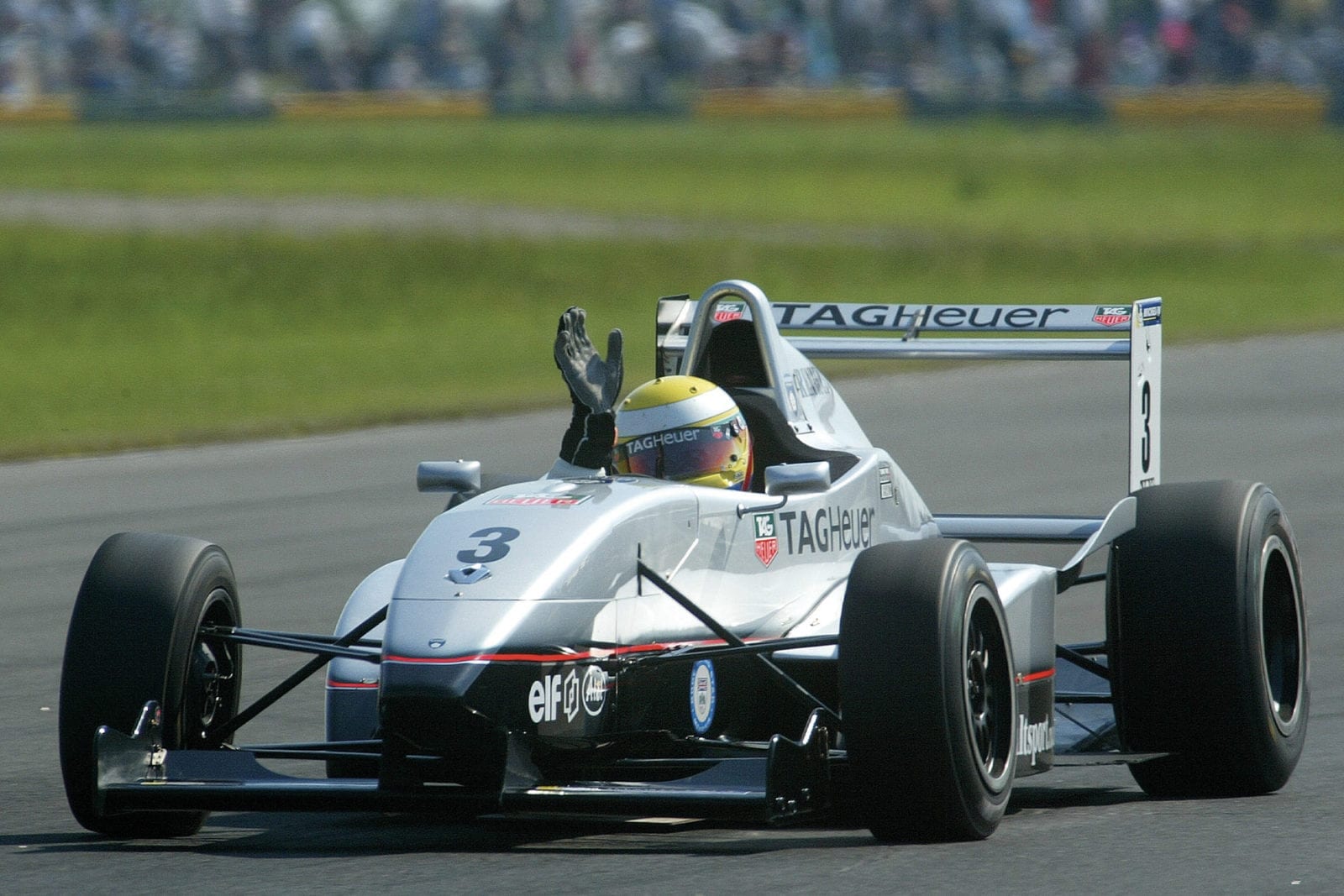
Keeping track of it all
Sir, In only being motorsport aware' from the days of Mario and Ronnie in the Lotus 79,1 have much enjoyed your Track Test series looking at the older tracks which…

Manor’s Hamilton took 10 victories driving the 2000 Formula Renault Tatuus in ’03
It’s hard to think of a more successful or influential junior single- seater than Tatuus’ first one-make Formula Renault racer. Controversial at first, the Italian-built, French-powered car almost single-handedly transformed the junior series scene worldwide.
But Formula Renault in the UK was tricky at first. The British racing core was content with strong Formula Ford 1600 grids, its successful bigger brother, FFord 2000, and even Formula Vauxhall Lotus. Any new single-seater category had to bring something special and, at first, FRenault showed little promise on these shores.
When it arrived, after successful European pedigree, it allowed cars to be built by multiple brands around a set of spec parts designed to control costs. Constructors would get a 1721cc engine, electrics, brakes, gearbox and wheels to create a spaceframe chassis around.
Uptake was slow at first, with just five cars starting the inaugural UK race at Thruxton in 1989. The numbers grew as the prospect of a junior category offering good power and ‘slicks and wings’ on a reasonable budget took hold, as did a chunky prize fund from Renault and the lure of an F3000 test for the champion. Engines were increased to 2-litre spec from ’95, but the series’ biggest advance came at the turn of the century when it went single-make.

Räikkönen’s 2000 championship- winning Formula Renault UK car recently sold for £13,500 at auction
This was anathema to FRenault’s biggest rival, FFord. FRenault’s gamble of getting rid of big-name makes such as Van Diemen, Swift and Mygale looked a big one, but in truth, it was market-led. Formula Vauxhall was gathering momentum in its similar plan of using Reynard-built chassis, but it lacked the financial clout, and Formula 1 connection, of Renault. With its single-make switch, FRenault ensured not only its survival but also long-term success.
F1 cars had big, downforce-inducing wings and were unrecognisable from the wingless FFords at the bottom of the ladder. Kids with big budgets coming out of karting wanted cars that looked, and acted, right. Renault went in search of a supplier able to hit that target.
Between 1996-99 every FRUK champion used a Tatuus chassis, so when the tender came up for a single-make supply from 2000, Artico Sandonà’s firm was a natural choice. Seeking to create a true baby grand prix car, Tatuus designed a carbon-fibre tub and mated it with the proven 2-litre in-line four Renault F4R engine also used in the Renault Clio Cup, and a Sadev sequential gearbox. The result could get from standstill to 100mph in just under five seconds, and had downforce to boot, offering a stepping-stone for any driver.
The appeal of the new car brought some of the best European and domestic karting talent through. Kimi Räikkönen won the inaugural single-make title in 2000 and was signed directly to Sauber’s F1 team for the following year. It was reinforcement that FRenault had made the right call.
Other notable stars to hone their skills in a Tatuus FR2000 in the UK include Lewis Hamilton (2003 champion), Mike Conway (2004), Oliver Jarvis (2005) and other drivers such as Paul di Resta, Alexander Sims and Sam Bird. Throw the net wider to include other regions, and there aren’t many modern F1 drivers without some FRenault experience on their CV.

Two wins at Donington concluded Hamilton’s title victory in ’03 ahead of F3 Euro Series graduation for ’04
Tatuus’ first single-make design was used for a decade – unheard of at the time – and proliferated worldwide. Just under 1000 were built and sold to cover 14 different series – from Estonia to Argentina and Brazil, via China.
It proved a runaway success, with the top-tier Eurocup then bringing the best from multiple regions together.
There were a handful of bodywork revisions, mostly around the bargeboards and sidepods, and a hike in engine power from 185bhp to around 200bhp from 2006, but the base stayed stable for its 10-season life.
Tatuus’ FR2000 design was eventually replaced in 2010, but it raced in club-level series such as Formula Renault BARC until 2014, and cars can still be found active elsewhere.
That helps make this design one of the most influential and enduring single-seaters ever.
Price new: €45,000
Price now: £10,000-£20,000
Engine: 2-litre Renault Sport F4R FS in-line four cylinder, naturally aspirated
Rivals: Formula Ford 1600, Formula BMW
Verdict: Game changer with a huge impact on modern single-seater racing
After the Formula Renault 2.0 UK series folded in 2012, which was followed by the end of the Protyre Formula Renault series in 2014, demand for the Formula Renault 2000 vehicles fell in the UK market.
The market is now more concentrated around continental Europe and Malaysia, following in the wake of the Formula Renault Eurocup 2.0 and Formula Renault AsiaCup competitions.
With a Clio-derived engine, spares are readily available and not prohibitively expensive, so they do remain popular purchases even now.
Cars typically retail in the £10,000 to £20,000 range with the most publicised Formula Renault 2000 sale being that of Kimi Räikkönen’s Manor Motorsport championship- winning car he drove during the 2000 season.
This was the last car he campaigned before moving into Formula 1, and it originally sold at auction in 2015 for £10,620 before it was sold again in 2016 for £13,500.
We don’t anticipate prices changing far from their current range as most vehicles are likely to be in the hands of enthusiasts.
Robert Johnson, Classic and Sports Finance
Tatuus Formula Renault FR2000 – £10,000 – £20,000